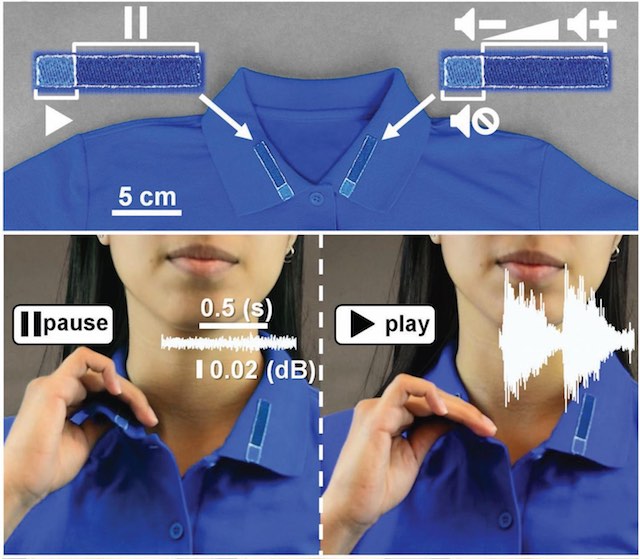
A new addition to your wardrobe may soon help you turn on the lights and music—all while also keeping you dry, clean, and safe from the latest virus that’s going around.
That’s because Purdue University researchers have developed a new fabric innovation that allows wearers to control electronic devices through their clothing.
“It is the first time there is a technique capable to transform any existing cloth item or textile into a self-powered e-textile containing sensors, music players, or simple illumination displays using simple embroidery without the need for expensive fabrication processes requiring complex steps or expensive equipment,” said Ramses Martinez, an assistant professor in the School of Industrial Engineering.
The technology is featured in Advanced Functional Materials.
LOOK: Autism-Friendly Clothing Ditches Zips, Buttons, and Tags—And It Offers GPS
“For the first time, it is possible to fabricate textiles that can protect you from rain, stains, and bacteria while they harvest the energy of the user to power textile-based electronics,” Martinez added. “These self-powered e-textiles also constitute an important advancement in the development of wearable machine-human interfaces, which now can be washed many times in a conventional washing machine without apparent degradation.
The clothing is waterproof, breathable, anti-bacterial, and self-powered. Its technology is based on omniphobic triboelectric nanogeneragtors (RF-TENGs) which use simple embroidery and fluorinated molecules to embed small electronic components and turn a piece of clothing into a mechanism for powering devices.
The Purdue team says the RF-TENG technology is like having a wearable remote control that also keeps odors, rain, stains, and bacteria away from the user.
RELATED: After Wildly Successful Crowdfunding, You Can Now Order Bike Helmets That Look Like Regular Hats
“While fashion has evolved significantly during the last centuries and has easily adopted recently developed high-performance materials, there are very few examples of clothes on the market that interact with the user,” Martinez said. “Having an interface with a machine that we are constantly wearing sounds like the most convenient approach for a seamless communication with machines and the Internet of Things.”
The technology is being patented through the Purdue Research Foundation Office of Technology Commercialization. The researchers are looking for partners to test and commercialize their technology.
Reprinted from Purdue University
Power Up With Positivity By Sharing The Good News To Social Media…




















